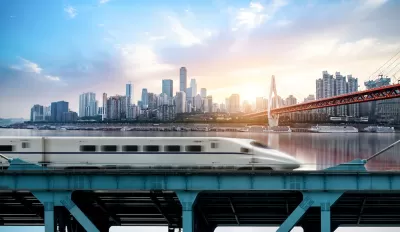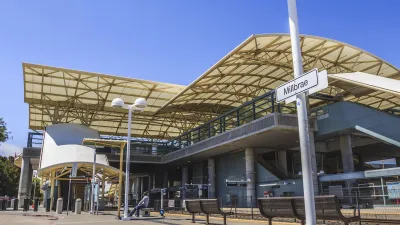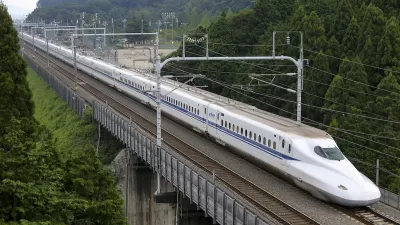The country is building tens of thousands of miles of rail service that is expensive to maintain and, in some cases, redundant.

In the last two decades, China has built over 30,000 miles of high-speed rail, reports Brian Spegele in MSN News. “The plan sticks to a well-worn economic model built on maintaining growth through infrastructure spending—even though China already has much of what it needs.”
However, the country’s rail operator has amassed nearly $1 trillion in debt and liabilities, and questions are being raised about how necessary many of the new rail lines, particularly those running to rural areas, are. “The line connecting Shanghai and the tech hub of Hangzhou, home to Alibaba, drew an average of around 100,000 passenger trips every day during its first decade between 2010 and 2020, according to state media.” But a similar line in rural Fushun County only reported roughly 9,000 daily trips, and some rural lines replicate existing services, rendering them unnecessary.
According to Spegele, “China is now practically duplicating some routes. High-speed trains have operated for years between the inland cities of Chongqing and Kunming, a journey that takes about five hours. China State Railway says a new $20 billion line being built between the cities, following a different path, will cut travel time to about two hours, while supporting the regional economy and promoting national unity.”
FULL STORY: China Is Building 30,000 Miles of High-Speed Rail—That It Might Not Need

Trump Administration Could Effectively End Housing Voucher Program
Federal officials are eyeing major cuts to the Section 8 program that helps millions of low-income households pay rent.

Planetizen Federal Action Tracker
A weekly monitor of how Trump’s orders and actions are impacting planners and planning in America.

Ken Jennings Launches Transit Web Series
The Jeopardy champ wants you to ride public transit.

Washington Legislature Passes Rent Increase Cap
A bill that caps rent increases at 7 percent plus inflation is headed to the governor’s desk.

From Planning to Action: How LA County Is Rethinking Climate Resilience
Chief Sustainability Officer Rita Kampalath outlines the County’s shift from planning to implementation in its climate resilience efforts, emphasizing cross-departmental coordination, updated recovery strategies, and the need for flexible funding.

New Mexico Aging Department Commits to Helping Seniors Age ‘In Place’ and ‘Autonomously’ in New Draft Plan
As New Mexico’s population of seniors continues to grow, the state’s aging department is proposing expanded initiatives to help seniors maintain their autonomy while also supporting family caregivers.
Urban Design for Planners 1: Software Tools
This six-course series explores essential urban design concepts using open source software and equips planners with the tools they need to participate fully in the urban design process.
Planning for Universal Design
Learn the tools for implementing Universal Design in planning regulations.
Heyer Gruel & Associates PA
Ada County Highway District
Institute for Housing and Urban Development Studies (IHS)
City of Grandview
Harvard GSD Executive Education
Toledo-Lucas County Plan Commissions
Salt Lake City
NYU Wagner Graduate School of Public Service





























